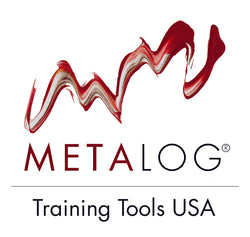- No products in the cart.

Find out how a sales consultant uses Emotion Cards with branch managers and department heads at a German car dealership to start important strategy sessions
Throughout the world, Germany's automotive industry is celebrated for its exceptional efficiency and first-class quality. Its brands are among the most sought after on the planet – particularly luxury cars BMW, Mercedes Benz and Audi – and the industry is a critical component of Germany's economy.
It should come as no surprise then that Mark Wagner, a freelancer trainer in the automotive sector, strives to work the same way his clients do – by achieving high-caliber results with minimum wasted effort.
To optimize every client interaction, whether it's a sales training, team building or leadership development event, the German facilitator frequently turns to experiential activities and Metalog Tools. They give him a direct line to learners' visual and tactile senses, and he uses this connection to jump start the learning experience. One tool he is especially fond of is Emotion Cards.
Wagner uses Emotion Cards to swiftly set the scene for maximum learning. In one instance, he was planning an important strategy retreat for a car dealership that had experienced a fair amount of change. He was going to be working with a group of branch managers and department heads for a day and a half to help them develop a strategy for the coming months, and he knew the group would benefit from reflecting openly about the recent changes first. Additionally, because they already met every week, he sought to break them out of their regular routine.
Round one: three cards for three questions
To kick things off, Wagner set out two sets of Emotion Cards on two tables, then divided everyone into groups of three. Using a flipchart, he asked each person to select one card to address each of the following questions:
- How am I dealing with the current state of play?
- Where do I want to go?
- How will I get from photo one to photo two?
In their small breakout groups, each person explained their cards to the others. At the end, the two listeners gave feedback on what they heard by answering the prompts, 'What did I notice or perceive?' and 'What questions are still open?'
The entire experience took 45 minutes. Everyone had a great time choosing their cards and the conversation started instantly, according to Wagner.
"It never fails to fascinate me how easy it is for participants to take a card and be able to intuitively talk about it. And that's how it worked this time. The kickoff exercise had a catalyzing effect on the group, making everyone more relaxed, open and curious about next steps. If the group had done the exercise without the cards, the whole thing would have been merely a rote, intellectual exercise."
Round two: selecting cards for strengths and wishes
Wagner used Emotion Cards again at the end of the retreat. This time, he asked everyone to form new groups of four people, and for three people from each group to give feedback to one person using the cards. They were to select one card to address the person's strengths, answering the questions, 'What do I notice about you?' and 'What really stands out?' and another card to send the person wishes, noting 'What do I want for you?' and 'What would I like to give you?'
"Again, the group had no difficulty finding the most appropriate cards, and they provided excellent support for a demanding task," Wagner explains. "This brought the retreat to a very positive close."
About the trainer
Mark Wagner is a trainer and coach in Duisburg, Germany.
